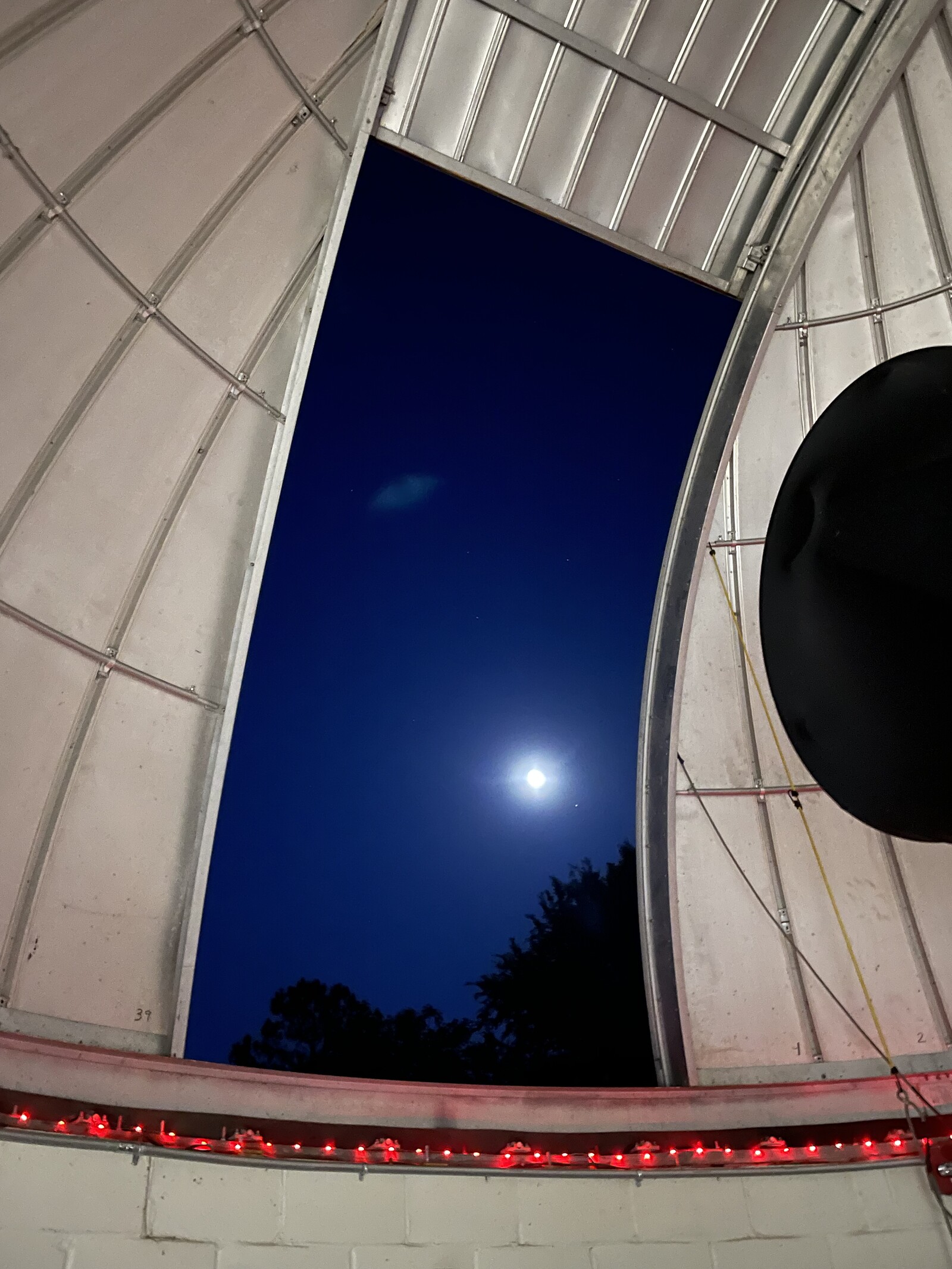Cosmic Dust
Inaugural exhibition at HLC Observatory
April 13–October 7, 2024
This inaugural two-person exhibition at Georgia State University’s HLC Observatory will mark the beginning of an ongoing collaboration between art and science at the university. The exhibition will showcase the work of two faculty members in art and design, Jeremy Bolen and Pamela Longobardi. Their work and research delve into the intersections of science and art, focusing on new forms of visibility in the Anthropocene, the widely debated concept of a new geologic epoch for Earth. Both artists employ unique and collaborative approaches to explore our rapidly changing planet, often involving scientists and scientific institutions in their research.
Cosmic dust, once regarded as merely an annoyance to astronomers for obscuring objects of interest, gained significance when infrared astronomy revealed its crucial role in astrophysical processes. Drawing from this revelation, the artists aim to explore how new forms of knowledge can emerge from investigating the unknown and the unseen, including that which obscures our understanding.
In Cosmic Dust, Bolen and Longobardi individually tackle issues that may not be readily visible or identifiable but are fundamental to comprehending our planet. Through immersive, installation-based works, Longobardi addresses themes such as migration, climate change, and isolation. Bolen uses similar strategies to investigate how human created phenomena have and will obscure our views—including light pollution and possible forms of geo-engineering such as solar radiation management, speculating on the future of what our earth might look like and how we might engage with it.
The location of the observatory holds significance, designed to extend our sensory perceptions and educate the public. However, akin to many aspects of the Anthropocene, human activities are making it increasingly difficult to observe and understand our planet. In close proximity to the observatory, a Rivian Electric Automobile plant is planned, poised to boost electric vehicle production—a crucial step in combating climate change. Yet, as with most endeavors in this era, there are trade-offs and consequences: the potential for light pollution could render the HLC observatory unusable.
Jeremy Bolen is an artist, researcher, filmmaker and educator whose work simultaneously indexes our current ecological crises, while speculating on the future of what our earth might look like and how we might engage with it. Throughout the past fifteen years he has created research and work at several scientific institutions including: CERN, Argonne National Laboratory, Sanford Underground Research Facility, Georgia Institute of Technology and Fermi-Lab. Bolen has had numerous exhibitions and screenings worldwide including at Origins Centre Museum, Johannesburg; Haus der Kulturen der Welt, Berlin; the Museum of Contemporary Photography, Chicago; PACT Zollverein, Essen; EXGIRLFRIEND, Berlin; POOL, Johannesburg; Feld Station, Cape Town; Andrew Rafacz, Chicago; and Soccer Club Club, Chicago. He has recently screened films at Antimatter (Media Art), Vancouver; Lima Alterna International Film Festival, Lima; Chicago Underground Film Festival, Chicago; and Bideodromo International Film Festival, Bilbao. Bolen lives and works in Atlanta, serves as Assistant Professor of Photography at Georgia State University and is represented by Andrew Rafacz gallery, Chicago. @jb0len
Pam Longobardi’s parents, an ocean lifeguard and the Delaware state diving champion, connected her from an early age to water. After discovering mountains of plastic on remote Hawaiian shores in 2006, she founded the Drifters Project (@drifterproject), centralizing the artist as culture worker/activist/researcher. Now a global collaborative entity, Drifters Project has removed tens of thousands of pounds of material from the natural environment and re-situated it in social space. Her practice extends to painting, collage, photography, sculpture, installation and performance. Winner of the prestigious Hudgens Prize, Longobardi has been featured in National Geographic, SIERRA magazine, the Weather Channel and in exhibitions around the world. She is Oceanic Society’s Artist-In-Nature, and Distinguished University Professor and Regent’s Professor at Georgia State University in Atlanta. Longobardi recently exhibited a 16-year survey of her work at the Baker Museum in Naples, Florida accompanied by a monograph titled Ocean Gleaning published by Fall Line Press.
HLC Observatory is Located in the middle of Hard Labor Creek State Park in Rutledge, 50 miles east of downtown Atlanta, Hard Labor Creek Observatory is not only a resource for the professional astronomers in the Department of Physics & Astronomy at Georgia State University, but also amateur astronomers. HLCO has served the public since the 1980s, bringing the wonders of the Universe to Georgia residents monthly through its open house program. Today HLCO is run by Dr. Fabien Baron and a team of graduate student volunteers at GSU, and is open monthly from from March to October.








